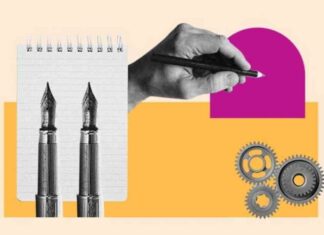Google’s AI-powered ad image editing capabilities are set to revolutionize the way advertisers create and optimize visual assets across the platform. This expansion of AI technology to search, display, app, and demand gen campaigns marks a significant step towards enhancing creative capabilities for marketers.
At the recent DMEXCO marketing conference, Google announced the exciting news of expanding access to machine learning-powered ad creative tools. This move will empower marketers to automate the production and optimization of visual assets at scale, ultimately streamlining the advertising process and improving campaign performance.
Automated Image Editing at Your Fingertips
Google’s core technology, known as “Automated Image Editing,” leverages machine learning algorithms to automatically enhance, edit, and generate responsive ad images based on an advertiser’s creative assets and branding guidelines. This powerful tool can perform a range of tasks, including automating image resizing for different ad placements, removing unwanted backgrounds from product images, applying brand colors, fonts, and logos, creating video thumbnails and social media assets, and even generating entirely new images from textual descriptions.
The human touch is not forgotten in this process, as advertisers maintain control over their edits through a “human in the loop” workflow. This allows marketers to select their preferred edits and preview multiple variations side-by-side before publishing, ensuring that the final visual assets align with their brand identity and messaging.
Enhanced Creative Capabilities Across Languages
In addition to expanding access to AI-powered ad image editing, Google is also broadening its language offerings to cater to a more diverse global audience. The upcoming launch of AI ad creative capabilities in six new languages—German, French, Spanish, Portuguese, Hindi, and Japanese—will further democratize access to cutting-edge advertising tools and empower marketers worldwide to create compelling visual assets that resonate with their target audiences.
Balancing Automation and Control
Google’s commitment to balance AI automation with granular advertiser controls underscores the company’s dedication to providing a seamless and user-friendly experience for marketers. By combining the efficiency of machine learning algorithms with the creative input of human users, Google aims to save marketers time while optimizing creatives for better ad performance and brand consistency across channels.
Seamless Integration Across Campaign Types
The expansion of AI-powered ad image editing to search, display, app, and demand gen campaigns signifies Google’s commitment to empowering advertisers with advanced creative capabilities tailored to their specific campaign objectives. By seamlessly integrating machine learning-powered tools across different campaign types, Google is enabling marketers to create visually compelling ads that drive engagement and conversions across the platform.
Looking Ahead: The Future of AI in Advertising
As AI technology continues to evolve and transform the advertising landscape, marketers can expect to see even more innovations in the realm of ad creative tools. With Google leading the charge in harnessing the power of machine learning to enhance advertising capabilities, advertisers can look forward to a future where creating visually captivating ads is easier, more efficient, and more effective than ever before.
In conclusion, Google’s expansion of AI-powered ad image editing capabilities across search, display, app, and demand gen campaigns represents a significant milestone in the evolution of advertising technology. By leveraging machine learning algorithms to automate the production and optimization of visual assets, marketers can streamline their creative process, improve campaign performance, and enhance brand consistency across channels. With new language offerings on the horizon and a commitment to balancing automation with control, Google is paving the way for a future where AI-driven advertising tools empower marketers to create compelling visual assets that resonate with their target audiences.























